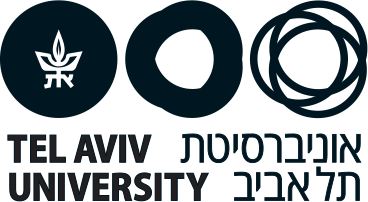Entropy Measurements in Mesoscopic Systems
Quantum systems that have been engineered to host correlated electronic states are of outstanding fundamental
and technological interest. Often ``exotic" new quasi-particles emerge, such as Majorana fermions, whose
inherent topological robustness forms the basis of a promising approach to quantum computation. Another
recent example are sheets of pencil-lead graphene which superconduct with a proper twist between layers.
Thermodynamic probes have been central for characterising new phases of matter in bulk materials. Low dimensional
systems offer greater opportunities for control, but probing their electronic states in a similar way
is notoriously difficult, in part because of the small number of electrons involved.
The objective of a ERC synnergy program I am part of is to overcome this challenge and to develop in collaboration with experimentalists a unique conceptual and experimental
foundation for exploring correlated quantum states in low-dimensional systems by measuring thermodynamic
quantities, in particular entropy. Entropy is one of the most fundamental of physical properties, and in recent
years has been recognized as a key to understanding systems as diverse as qubits and black holes. Fully
exploiting entropy measurements in mesoscopic physics will open up a new window to a mechanistic
understanding of correlated quantum states in engineered structures, with promise for ground-breaking novel
device paradigms.
Representative works are:
Cheolhee Han, Zubair Iftikhar, Yaakov Kleeorin, Anne Anthore, Frédéric Pierre, Yigal Meir, Andrew K. Mitchell, Eran Sela, Phys. Rev. Lett. 128, 146803 (2022)
Strain Engineering in Graphene materials
Along with progress in design of two dimensional materials, I became fascinated by the possibilities to employ mechanical-electronic coupling available in graphene materials, to construct novel phases via strain engineering. Upon streching a graphene sample, one can create pseudomagnetic fields which can be engineered to be uniform and large on a macroscopic sample. This opens new possibilities of elasticity induced quantum Hall effects, with new expected correlation states. Sela, Bloch, von Oppen, Ben Shalom, Phys. Rev. Lett. 124, 026602 (2020)
Fractional Quantum Hall Physics in Coupled one dimensional wires
Recently my group have focused on various aspects of topological states of matter. Specifically we have explored possibilities of reaslizing strongly interacting topological states, akin to the factional quantum Hall effect, in one spatial dimension. Different physical systems may be candidates, for example we explored quantum wires with spin-orbit coupling in Oreg, Sela, and Stern, PRB 2014. These exotic systems show up elementary excitations whose fractional charge (compared to the electron charge) can be extracted from shot noise, as described in Cornfeld, Neder, Sela arXiv:1402.5626. More lately we constructed multilayer quantum Hall states which break time reversal symmetry in Meng, Sela Phys. Rev. B 90, 235425 (2014)Phys. Rev. B 90, 235425 (2014), and chiral spin liquids Gorohovsky, Pereira, Sela, arXiv:1503.05050.
Quantum entanglement - symmetry resolution and measurement
We adopted conformal field theory methods to uncover an elegant symmetry resolution of entanglement, see Goldstein and Sela, PRL 2018. It turns out that methods implemented to measure entanglement in cold atom systems can be used directly to measure its symmetry resolution, see Cornfeld, Goldstein, and Sela, PRA 2018. We have looked at many manifestations of this symmetry resolved entanglement, including in exotic systems of non-abelian anyons, see Cornfeld, Landau, Shtengel and Sela, PRA 2019.
Kondo Physics in Quantum Dots
Quantum impurity models describe experimentally feasible small mesoscopic devices called quantum dots. In those devices electron are transported one by one such that the charging energy of individual electrons, their spin, and quantum nature, play crucial role in determining the physical state. We have been concerned with non-Fermi liquid behaviour in quantum dots, including the more recent observation of the charge-Kondo effect. We explored these problems by combining conformal field theory methods and numerical renormalization group, see Sela, Mitchell, and Fritz, PRL 2011 and Mitchell, Sela, and Logan, PRL 2012. A fundamental question concerns with out of equilibrium phenomena in such systems Sela and Affleck PRL 2009.
The work of the group is funded by ISF and Marie-Curie grants. A list of recent publications can be found here.
